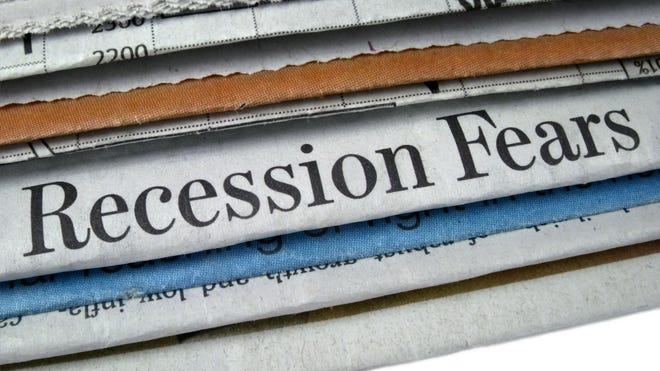The variety of jobs added final month fell in need of expectations and unemployment was on the rise, triggering a measure that has sometimes meant the U.S. is now in a recession.
The financial system has been unusually defiant, with the nation’s gross home product persevering with to develop, and employment developments reflecting the bizarre forces that got here into play through the COVID-19 pandemic, which dramatically disrupted the labor market.
That mixture of things has led most economists to find out that the “Sahm rule” in all probability would not apply proper now. However for roughly 5 a long time it has predicted each downturn.
So what precisely is the Sahm rule?
What’s the Sahm rule?
The Sahm rule is known as for famous economist Claudia Sahm, who has precisely forecast each U.S. recession because the Seventies.
Principally the rule says that if the jobless fee, primarily based on a three-month common, is a half share level above its lowest level over the earlier 12 months, the financial system has tipped right into a recession.
Friday’s jobs report technically meets the Sahm rule’s standards. The jobless fee in July rose from 4.1% to 4.3%, ticking the three-month common greater than a half level above the three.6% common one yr in the past.
The calculation is predicated on the truth that rising unemployment sometimes follows a spike in layoffs. And individuals who discover themselves instantly out of labor typically spend much less, placing a dent in enterprise earnings, which may make them lay off extra workers.
Will the Sahm rule apply this time?
It is unlikely, many economists say.
Although layoffs have reached their highest ranges in over a yr, based on the submitting of unemployment insurance coverage claims, they continue to be traditionally low. The important thing motive? Employers have typically hesitated to chop their staffs within the wake of COVID-related labor shortages that hindered their operations through the pandemic, says Ryan Candy, chief U.S. economist at Oxford Economics. The unemployment fee can also be traditionally low regardless of its enhance.
Fed Chair Jerome Powell responded to a query concerning the rule at a information convention Wednesday following the Fed’s determination to maintain the important thing rate of interest unchanged. “It is not like an financial rule the place it is telling you one thing should occur.” He continued, “what we predict we’re seeing is a normalizing labor market and we’re watching fastidiously to see if it seems to be extra.”
And Sahm, for whom the rule was named, wrote in a current publish, that “A recession is just not imminent, regardless that the Sahm rule is near triggering…The swing from labor shortages attributable to the pandemic to a burst in immigration is magnifying the rise within the unemployment fee.”
So why are jobless numbers up?
The rising unemployment fee is due partially to a rising variety of individuals searching for work together with those that’d left jobs through the pandemic to take care of family members or for well being causes, and others lured again by rising wages, Candy says.
Moreover, roughly a 3rd of the three million new positions added final yr had been crammed by current immigrants, based on estimates from RBC Capital Markets. However new immigrants even have extra issue discovering work initially, which contributes to the next jobless fee, Goldman Sachs says.
